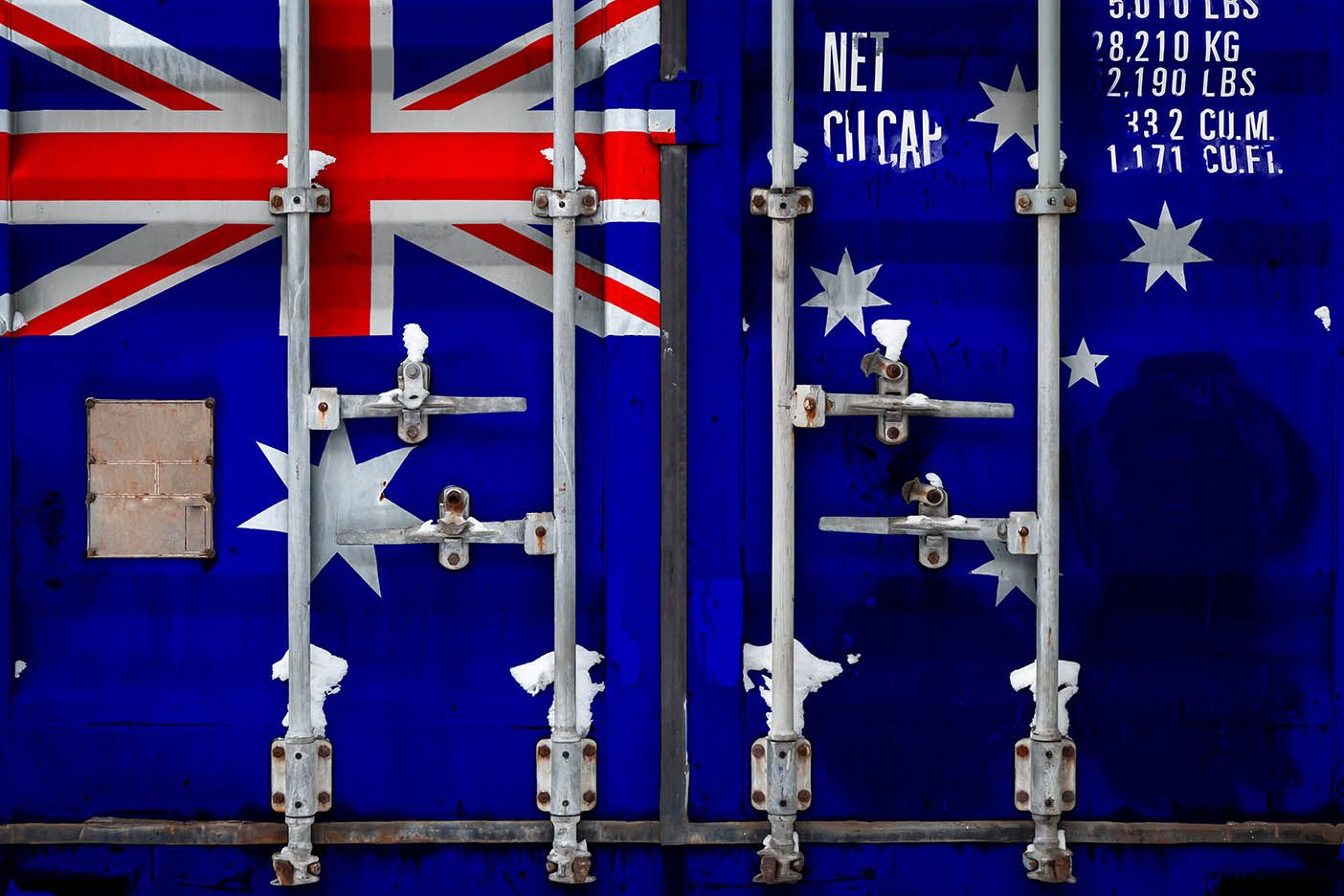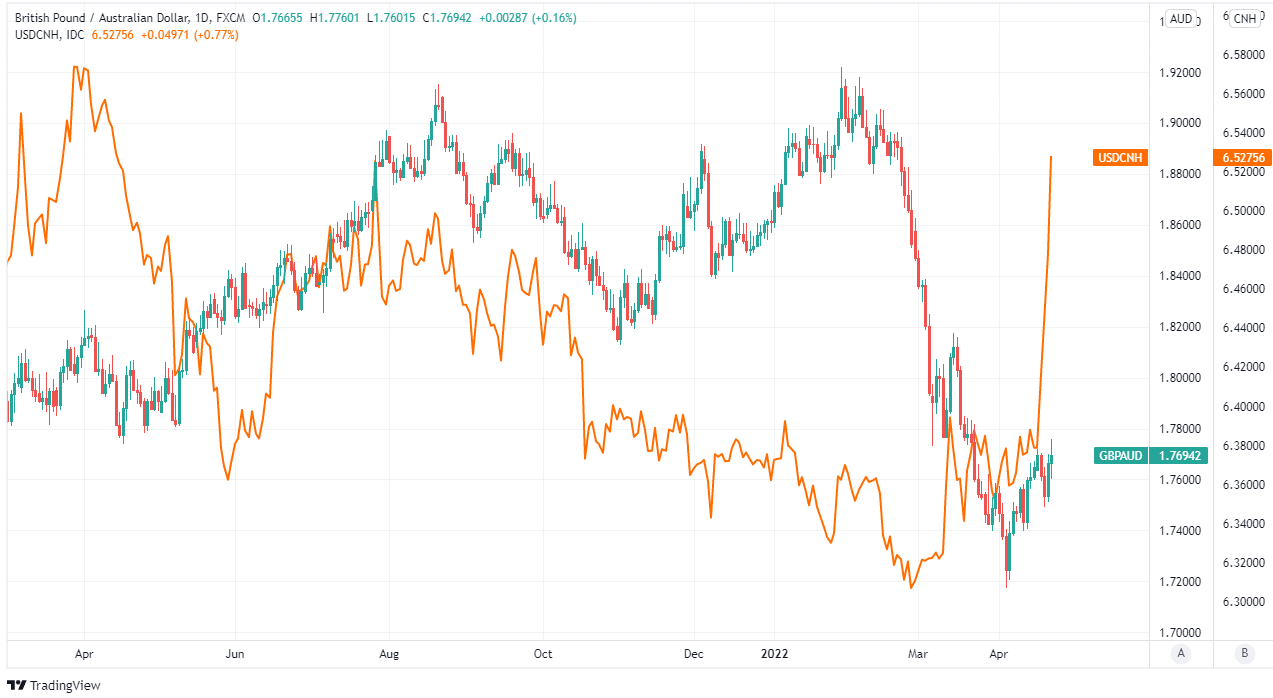Pound's Recovery against Australian Dollar Builds
- Written by: James Skinner
-
- GBP/AUD recovery building as AUD/USD slides
- USD strength & Renminbi’s declines each cited
- Iron ore & RBA outlook provide a cushion - CBA

Image © Adobe Images
The Pound to Australian Dollar rate extends its April rebound despite steep losses for Sterling elsewhere and after the antipodean currencies slumped amid an ongoing slide in the Renminbi.
Sterling had been the worst performing major currency on Friday before being overtaken by Australian and New Zealand Dollars that both tumbled toward the weekend in price action that some strategists attributed to a falling Renminbi.
“AUD/USD fell sharply towards its 200‑day moving average (around 0.7295), dragged lower by the plunge in CNH,” says Elias Haddad, a senior currency strategist at Commonwealth Bank of Australia.
“USD/CNH surged above 6.5000 to its highest level since July 2021. China’s easing monetary policy cycle and accelerating capital outflows from China are weighing on CNH,” Haddad and colleagues said on Friday.

China’s Renminbi slipped below a notable level of support on the charts Friday while on course for its largest weekly fall since March 2020, which comes amid a slowdown in the economy owing side effects of government reforms as well as the latest coronavirus containment actions.
“The US dollar on a DXY basis is up just 0.5% this week although that masks more notable strength versus many currencies due to the resilience of the euro this week,” says Derek Halpenny, head of research, global markets EMEA and international securities at MUFG.
“If US yields continue to rise it is hard to argue against further US dollar strength over the coming weeks. That said, with the US rates market now fully priced for four consecutive 50bp rate hikes, it is becoming more difficult to argue in favour of further notable increases,” Halpenny said on Friday.
While the Renminbi’s declines were notable and the Australian Dollar as well as Sterling are all positively correlated with the currency, there were other factors weighing on each and all including a further broad rally in U.S. Dollar exchange rates that was rooted in Federal Reserve (Fed) monetary policy.
Above: Interbank reference rates for selected U.S. Dollar pairs. Source: Netdania Markets.
Fed Chairman Jerome Powell said at International Monetary Fund and World Bank Group meeting Thursday that a 0.50% interest rate rise is now on the table for next month, effectively endorsing market expectations.
Meanwhile, some other Fed officials were even more ‘hawkish’ with their monetary policy prescriptions.
“The idea of a 75bp hike casually tossed out by Bullard this week has gained traction in fed funds pricing,” says Mark McCormick, global head of FX strategy at TD Securities.
“This makes fading USD resilience very difficult, and we think the flirtation towards 1.0950 resistance in EURUSD remains a notable technical barrier,” McCormick and colleagues also said on Friday.
While nascent Australian Dollar losses were steep and relentless ahead of the Friday close, the antipodean unit had benefited earlier in the week when minutes of the April Reserve Bank of Australia (RBA) meeting confirmed the bank is edging closer to raising its cash rate from the current record low.
“Bond yields had risen and expectations of future policy interest rates had increased. Members observed that, while market pricing implied a swift increase in policy rates over the near term, expectations were for rates to peak at levels that were low in a historical context,” the RBA’s meeting record says in part.
“Inflation had picked up and a further increase was expected, with measures of underlying inflation in the March quarter expected to be above 3 per cent. Wages growth had also picked up but, in aggregate terms, had been below rates likely to be consistent with inflation being sustainably at the target. These developments have brought forward the likely timing of the first increase in interest rates,” it said in another.
RBA guidance has been shifting steadily over a number of months although the pace of this shift has increased in 2022 and now many local economists and analysts are growing more confident in their forecasts that Aussie policymakers could lift the benchmark for borrowing costs by mid-year.
Some now even suggest that a rate rise could come as soon as the next meeting in May, which would likely be supportive of the Australian Dollar.
“We are forecasting a substantial lift in annual underlying inflation for the March quarter to 3.4% and a fall in the unemployment rate from 4% to 3.8% in April. On the basis of those forecasts we expect the RBA will decide to lift the cash rate by 40 basis points at its Board meeting on June 7,” says Bill Evans, chief economist at Westpac.

